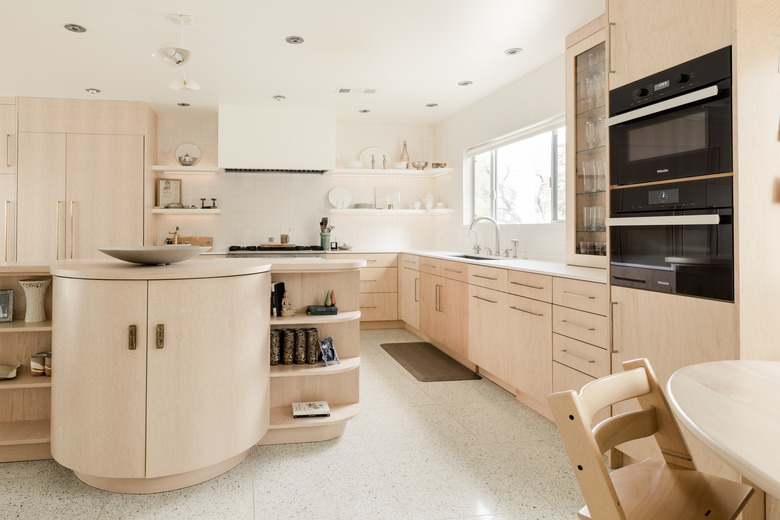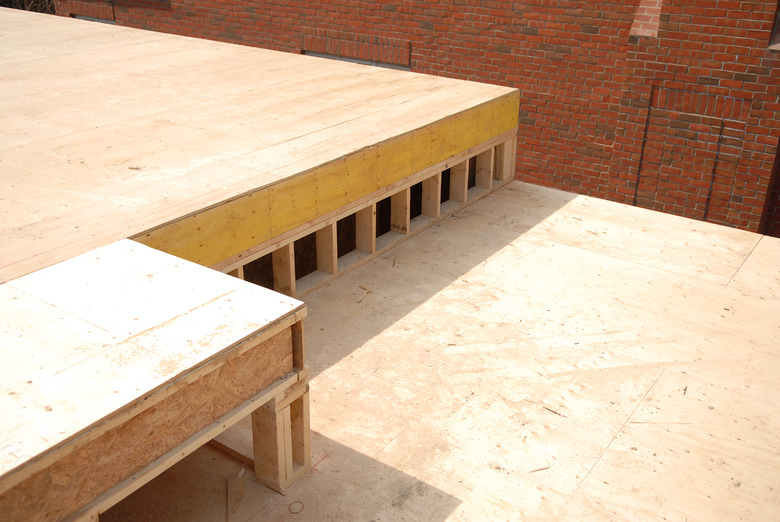Subfloor Vs. Underlayment
"Subfloor" and "underlayment" are both floor-related terms, but they refer to completely different layers — although they're often confused. These terms can't be used interchangeably because each of them has a unique, specific purpose. Subflooring is part of a home's structure, and it functions as part of the overall support system, while underlayment refers to the material used as a preparation layer for the finished flooring. Subflooring is installed first, with underlayment atop and then the finished floor.
Subfloor Definition and Basics
Subfloor Definition and Basics
A subfloor is one of several building blocks that is tied directly into the main framing of a home, along with studs, joists, headers and other related structural materials. It offers strength as well as serving as a foundational piece for your finished floor. Subfloors cover every layer of the home, from the basement or slab all the way to the attic space.
Subflooring is added to a home during initial construction. When a foundation or slab is poured, this creates one of the subfloor layers. The subflooring in higher levels of the house, which is typically made of plywood or oriented strand board (OSB), rests on joists, which are also tied into the studs to form the base structure of the frame in a house. In homes with a crawl space, the main level may have joists and a plywood subfloor since the concrete slab below the crawl space will not ever have flooring placed atop it.
About Subfloor Materials
About Subfloor Materials
Some of the more common building materials used for subfloors include plywood and OSB. Lumber installed over joists is another type of subfloor, but this is seen less often in current construction since it can be both expensive and time-consuming to install. Although particleboard is sometimes used for a subfloor, it is a poor choice because it doesn't offer much strength and isn't water-resistant.
Not all subflooring is made up of wood or wood-related materials. A concrete basement or slab foundation is considered a subfloor in addition to being a structural layer. When installing finished flooring on top of this type of material, it is important to do a moisture test to make sure the chosen flooring is suitable for the environmental conditions. After a subfloor is installed, the underlayment material can then be selected.
Underlayment Definition and Basics
Underlayment Definition and Basics
"Underlayment" is the term for the layer of material between the subfloor and the finished floor. Unlike a subfloor, this material is not meant to serve a structural function, but it does provide a suitable surface for the flooring that will be installed above it. Because each type of finished floor is different, the underlayment varies based on what works best with the floor material that has been selected.
In addition to being a good match for the finished floor, underlayment also serves other practical purposes, such as providing a sound-dampening effect, functioning as a vapor barrier and adding an additional layer of cushioning. Although the primary function of this material is to serve as a canvas for the finished floor, it can also offer a bit of stability to the overall flooring structure. However, it's important to note that this is not its primary function.
About Underlayment Materials
About Underlayment Materials
Tile requires specific types of underlayment to help make sure that expansion and contraction don't cause breakage. Installing tile directly on plywood without additional underlayment means the tiles would be subject to expansion and contraction, which can cause cracks. According to the Ceramic Tile Education Foundation, there are three main types of tile underlayment: backer boards (cement board), floor underlayment preparation materials and membranes.
Luan plywood is often used as underlayment for vinyl tile or sheets because it provides a smooth surface for the finished material. Vinyl is a sturdy flooring, but it is also thin. The surface of the underlayment needs to be flat and smooth so that nothing shows through. This is different than carpet, which is typically paired with a cushioning layer that can be comprised of a foam or rubbery material designed to be comfortable, provide some insulation and cut down on the overall wear and tear of daily foot traffic.
Hardwood floors are often installed over an underlayment of black felt paper, while foam is the designated material of choice for laminate floors. Sometimes, the foam is a part of the laminate material itself, while other times, it is installed as a separate layer. The type of foam used varies based on the subflooring. According to the North American Laminate Flooring Association, a 6‐mil polyethylene film is needed if the laminate will be installed over a concrete subfloor unless the manufacturer states otherwise.


